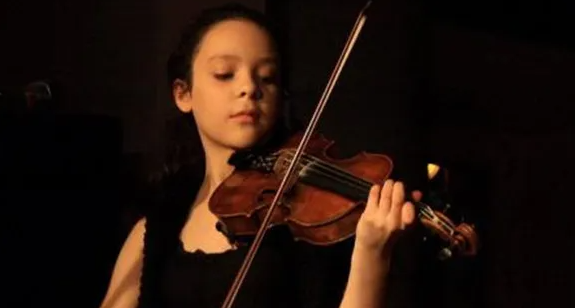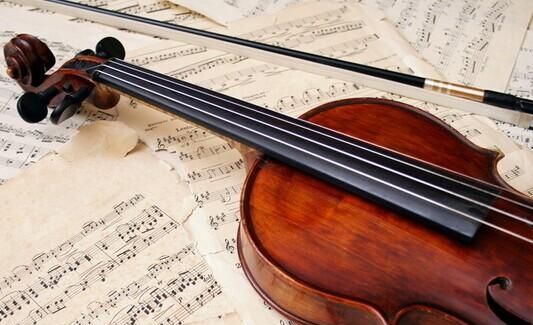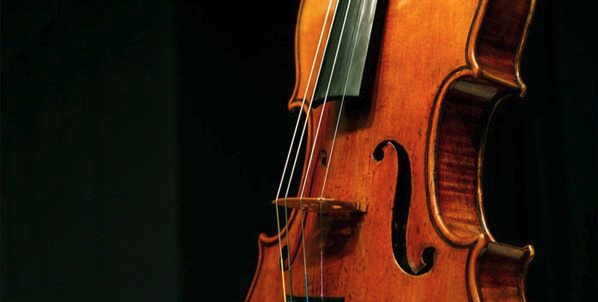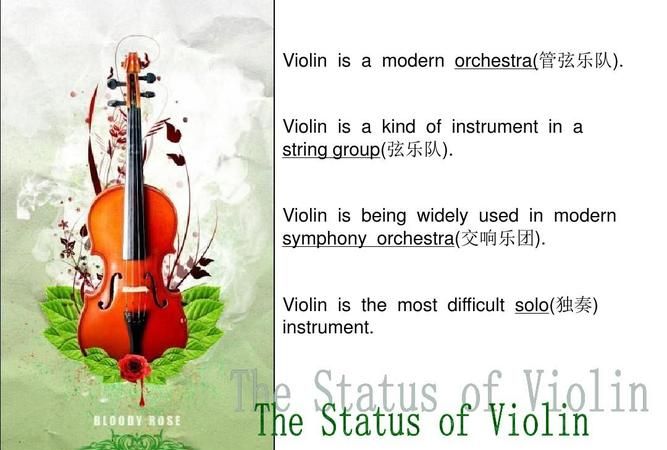本文目录
小提琴英语
violin读音:英 [ˌvaɪəˈlɪn] 美 [ˌvaɪəˈlɪn]
n.小提琴;小提琴手
复数: violins
例句:
1、Lizzie used to play the violin.
莉齐曾经拉过小提琴。
2、He played the violin, and he stood out from all the other musicians
他演奏了小提琴,把其他所有乐师都比了下去。
3、A performer in evening dress plays classical selections on the violin.
一名身穿晚礼服的表演者用小提琴演奏了几段古典音乐。

词语用法:
cello
n.大提琴
读音:英 [ˈtʃeləʊ] 美 [ˈtʃeloʊ]
复数: cellos
例句:
1、All this from playing the violin and the cello.
所有这些都来自于小提琴和大提琴的演奏。
2、Me and My Cello.
我和我的大提琴。
3、Selling my cello was really stupid!
卖了我的大提琴真是太蠢了!
拉小提琴用英语怎么表达
The violin is a super clean, to have played an instrument. It is widespread in the world, is the most important instrument of modern orchestra string group. It occupies a very important position in the instrumental music, is a pillar of the modern Symphony Orchestra, also has a solo instrument of high difficulty playing skills.
The emergence of the modern violin has a history of over 300 years, since seventeenth Century, the western music as one of the most important musical instrument, known as the queen of musical instruments. The production itself is an extremely fine art. Violin beautiful tone, close to the human voice, wide range, strong expressive force, from its birth, it has been a prominent status in the instrument, is the favorite. If the piano is the "king of the musical instrument", then "the instrument of the violin is the queen.".
中文:
小提琴是一种超擦奏管弦得鸣提乐器。它广泛流传于世界各国,是现代管弦乐队弦乐组中最主要的乐器。它在器乐中占有极重要的位置,是现代交响乐队的支柱,也是具有高难度演奏技巧的独奏乐器。
现代小提琴的出现已有300多年的历史,是自17世纪以来西方音乐中最为重要的乐器之一,被誉为乐器皇后。其制作本身是一门极为精致的艺术。小提琴音色优美,接近人声,音域宽广,表现力强,从它诞生那天起,就一直在乐器中占有显著的地位,为人们所宠爱。如果说钢琴是“乐器之王”,那么小提琴就是“乐器中的王后”了。
采纳~~

关于乐器的英语小短文初一
这个是介绍钢琴的文章
The piano is a musical instrument played by means of a keyboard that produces sound by striking steel strings with felt hammers. The hammers immediately rebound allowing the strings to continue vibrating at their resonant frequency. These vibrations are transmitted through a bridge to a soundboard that amplifies them.
The piano is widely used in Western music for solo performance, ensemble use, chamber music, and accompaniment. It is also very popular as an aid to composing and rehearsal. Although not portable and often expensive, the piano's versatility and ubiquity have made it one of the most familiar musical instruments. It is sometimes classified as both a percussion and a stringed instrument. According to the Hornbostel-Sachs method of music classification, it is grouped with Chordophones.
The word piano is a shortened form of the word pianoforte, which is seldom used except in formal language and derived from the original Italian name for the instrument, clavicembalo [or gravicembalo] col piano e forte (literally harpsichord with soft and loud). This refers to the instrument's responsiveness to keyboard touch, which allows the pianist to produce notes at different dynamic levels by controlling the speed with which the hammers hit the strings.
A musical instrument is a device constructed or modified with the purpose of making music. In principle anything that, produces sound, and can somehow be controlled by a person playing it, can serve as a musical instrument. The expression, however, is reserved generally for items that have a specific musical purpose. The academic study of musical instruments is called organology.
Voice, that is, the human voice, is an instrument in its own right. A singer generates sounds when airflow from the lungs sets the vocal cords into oscillation. The fundamental frequency is controlled by the tension of the vocal cords and the tone quality by the formation of the vocal tract; a wide range of sounds can be created.
A musical instrument is a device constructed or modified with the purpose of making music. In principle anything that, produces sound, and can somehow be controlled by a person playing it, can serve as a musical instrument. The expression, however, is reserved generally for items that have a specific musical purpose. The academic study of musical instruments is called organology.
Voice, that is, the human voice, is an instrument in its own right. A singer generates sounds when airflow from the lungs sets the vocal cords into oscillation. The fundamental frequency is controlled by the tension of the vocal cords and the tone quality by the formation of the vocal tract; a wide range of sounds can be created.
String instruments generate a sound when the string is plucked, strummed, slapped, etc. The frequency of the wave generated (and therefore the note produced) usually depends on the length of the vibrating portion of the string, its linear density (mass per unit length of string), the tension of each string and the point at which the string is excited; the tone quality varies with the construction of the resonating cavity. Examples: guitars, violins and sitars.
乐器是一个设备建造或与制作音乐的目的,修改。原则上任何事情,产生声音,并能以某种方式由一个人玩的,可以作为一种乐器控制。的表达,然而,保留的项目一般有特定的音乐宗旨。在乐器被称为颅相学的学术研究。
声音,即人类的声音,是在它自己的权利的工具。一个歌手的声音时产生的气流从肺部套到声带振动。控制的基本频率是由声带紧张和由声道音质的形成,一个范围广泛的声音可以被创建。
弦乐器生成一个字符串时,弹拨声,strummed,打耳光,等产生的波的频率(因此产生的说明)通常对字符串的振动部分的长度而定,其线性密度(每单位质量字符串的长度),每个字符串紧张和点是在哪个字符串兴奋;不同的音质与共鸣腔的建设。例子:吉他,小提琴和西塔。

小提琴用英语怎样说
The violin is a string instrument, usually with four strings tuned in perfect fifths. It is the smallest and highest-pitched member of the violin family of string instruments, which also includes the viola and cello, and occasionally the double bass.
The violin is sometimes informally called a fiddle, regardless of the type of music played on it. The word violin comes from the Middle Latin word vitula, meaning stringed instrument;[1] this word is also believed to be the source of the Germanic "fiddle".[2] The violin, while it has ancient origins, acquired most of its modern characteristics in 16th-century Italy, with some further modifications occurring in the 18th century. Violinists and collectors particularly prize the instruments made by the Gasparo da Salò, Giovanni Paolo Maggini, Stradivari, Guarneri and Amati families from the 16th to the 18th century in Brescia and Cremona and by Jacob Stainer in Austria.
A person who makes or repairs violins is called a luthier, or simply a violin maker. The parts of a violin are usually made from different types of wood (although electric violins may not be made of wood at all, since their sound may not be dependent on specific acoustic characteristics of the instrument's construction), and it is usually strung with gut, nylon/steel composite, or steel strings.
Someone who plays the violin is called a violinist or a fiddler. The violinist produces sound by drawing a bow across one or more strings (which may be stopped by the fingers of the other hand to produce a full range of pitches), by plucking the strings (with either hand), or by a variety of other techniques. The violin is played by musicians in a wide variety of musical genres, including Baroque music, classical, jazz, folk music, pop-punk and rock and roll. The violin has come to be played in many non-western music cultures all over the world.

以上就是关于介绍小提琴的英语短文 ,小提琴英语的全部内容,以及介绍小提琴的英语短文 的相关内容,希望能够帮到您。
